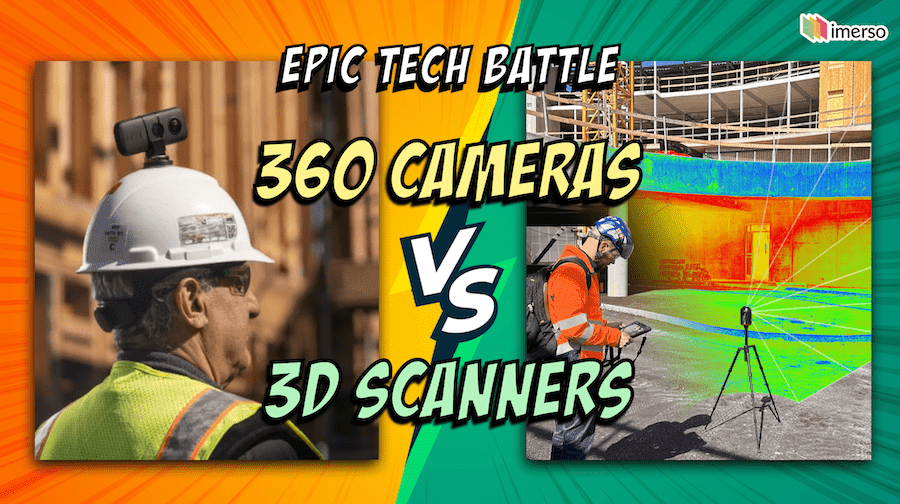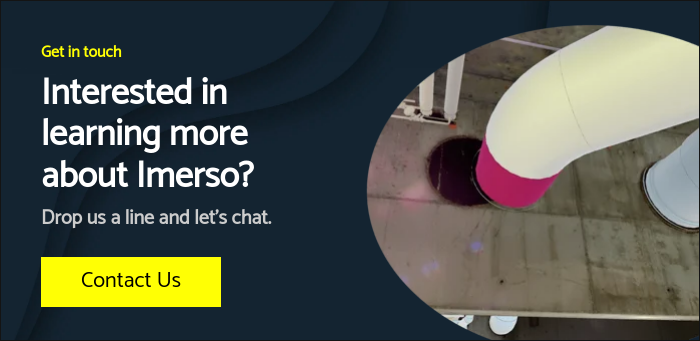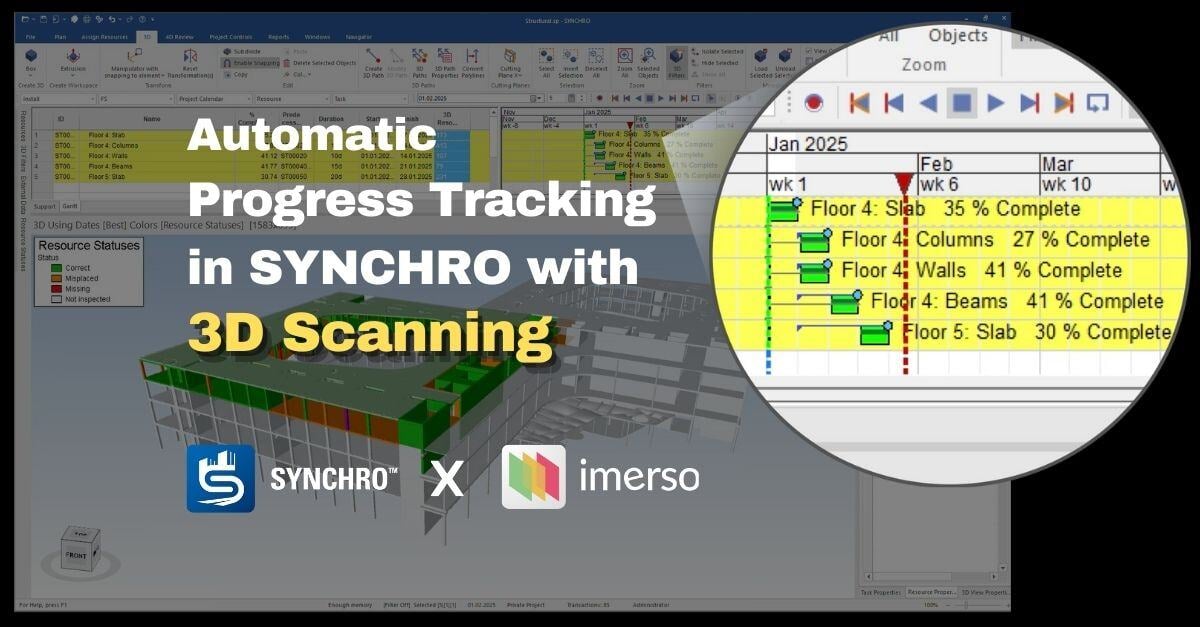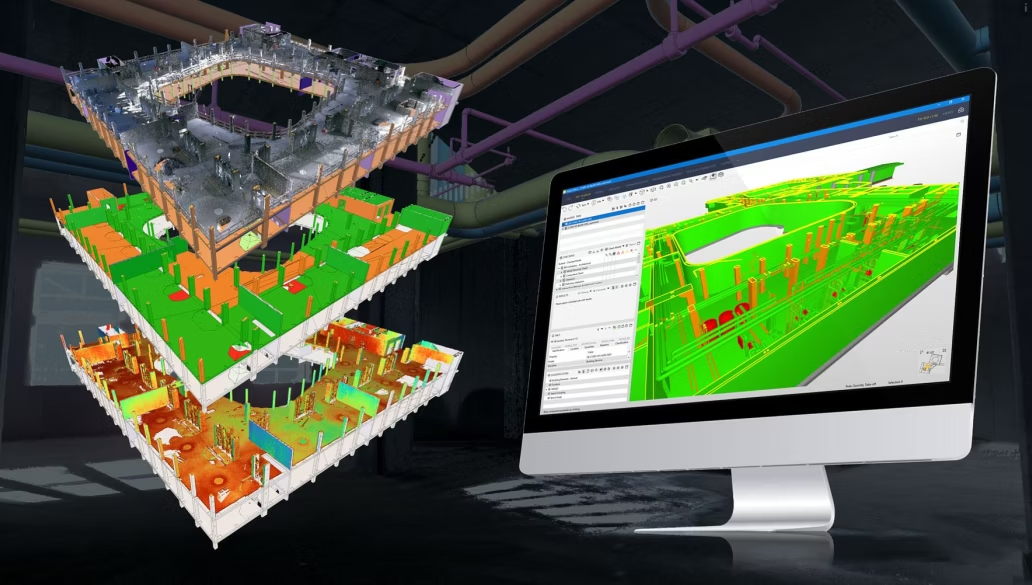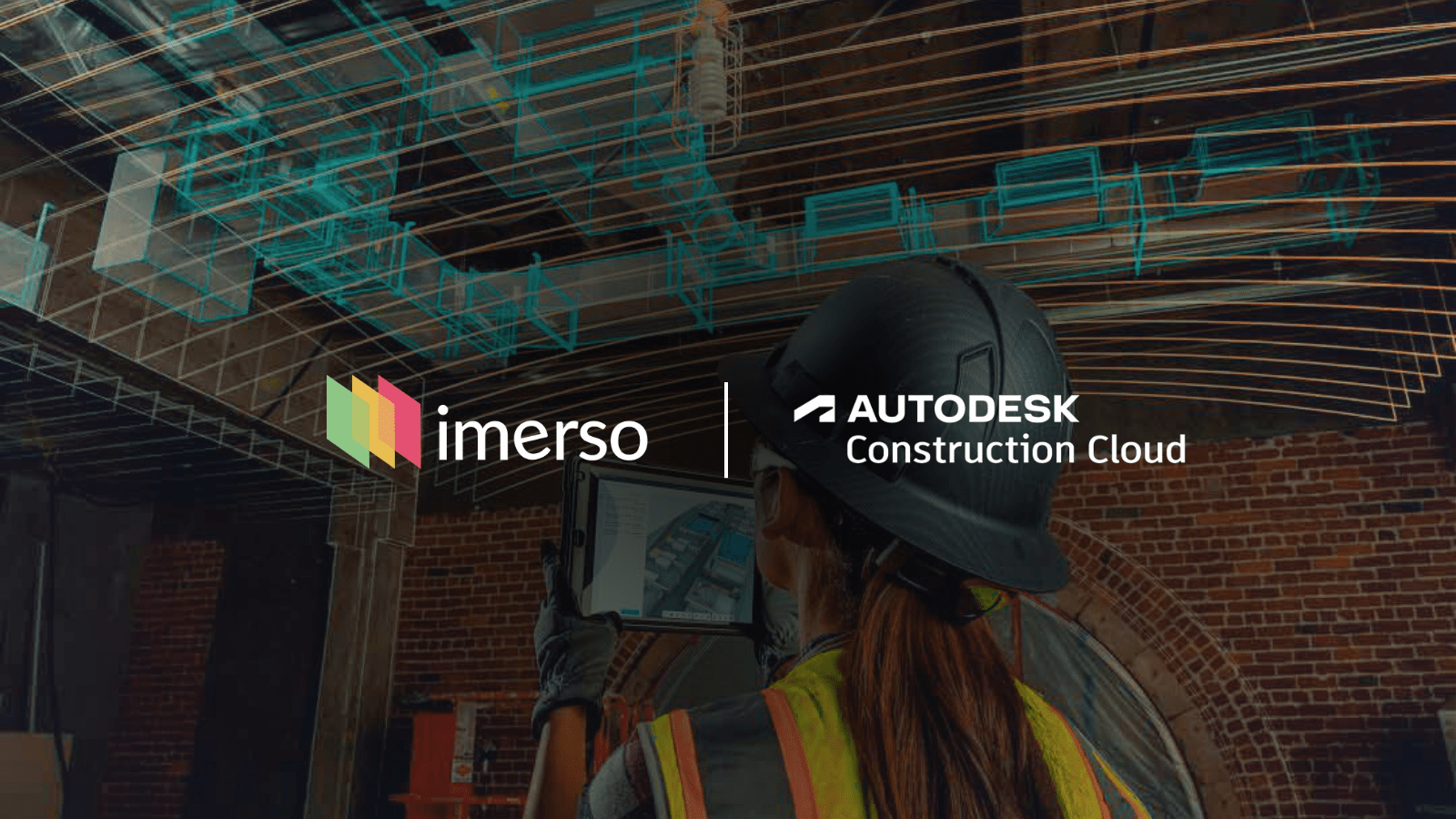Contents
How are 360 cameras used in construction?
How are 3D laser scanners used in construction?
Comparison of 360 cameras to 3D laser scanners for construction
Strengths and weaknesses of 360 cameras
Strengths and weaknesses of 3D laser scanners
How are 360 cameras used in construction?
The COVID-19 pandemic had a significant impact on many industries, including construction. One technological advancement that became increasingly popular during this time was the use of 360-degree cameras to facilitate remote virtual visits. These cameras utilise dual fisheye lenses to capture the entire surrounding environment in a single shot, providing high-quality and immersive imagery and video. It's likely that you have already encountered such imagery through popular consumer applications like Google Maps and Google Street View.
The main use of 360 cameras in the construction industry is to document the work status across all stages of construction more efficiently than with normal cameras or smartphone photos. This typically involves mounting 360 cameras on a construction helmet, or handheld pole, and recording continuous footage while users tour the jobsite, thus requiring little user input. Pretty simple.
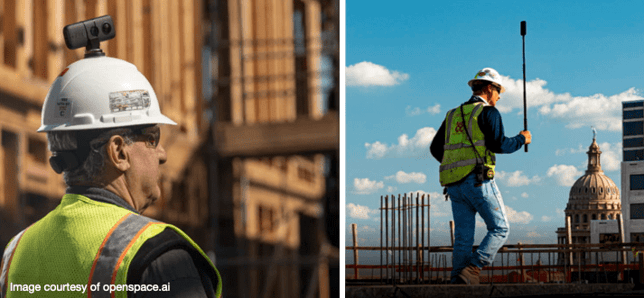 360 cameras for construction mounted on safety helmets or handheld poles.
360 cameras for construction mounted on safety helmets or handheld poles.
The resulting images help document installations before they are covered and stop being visible, facilitating future servicing and maintenance of those components. 360 images can also reduce the need for site visits by allowing remote access to the jobsite through virtual visits.
More recently, 360-degree cameras have been integrated with construction documentation and project management platforms, enabling teams to collaborate and share 360 images attached to floor plans, alongside checklists and field notes. Some tools even leverage object recognition algorithms to automatically classify and count specific objects captured in the images, helping project managers track work progress.
Most such tools allow placing the recorded 360 images side-by-side with the project’s BIM models, with synchronised viewpoints. This means that users can see the 360 images on one side and the BIM models on the other, in a split-screen view like the image below.
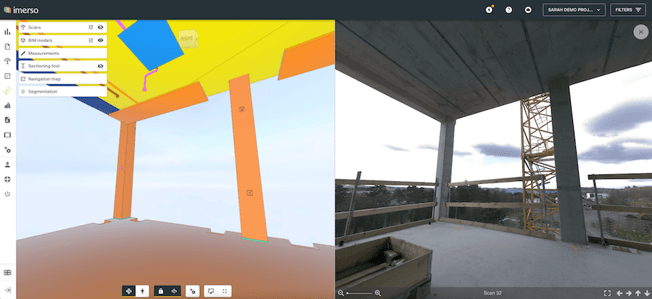
360 camera software for construction lets users tour the jobsite virtually with a split-screen view of the planned BIM models on one side and photos of the onsite status on the other.
However, while BIM models are 3D representations of the building plans, 360 cameras only deliver flat 2D images. Just like regular photos, 360 images are still just images: they lack measurements, depth, geometries and volumes present in real physical spaces. Yes, some software allows taking rough measurement estimates inside images, but these are far from reliable and always restricted to the fixed image viewpoint.
To properly capture a true-to-life copy of the jobsite, we must turn to a different approach.
How are 3D laser scanners used in construction?
3D laser scanners are a Reality Capture technology that create a virtual representation of the jobsite with one critical advantage: besides also capturing 360 images, laser scanners document construction sites in real 3D with millions of measurements in seconds, with millimetre precision.
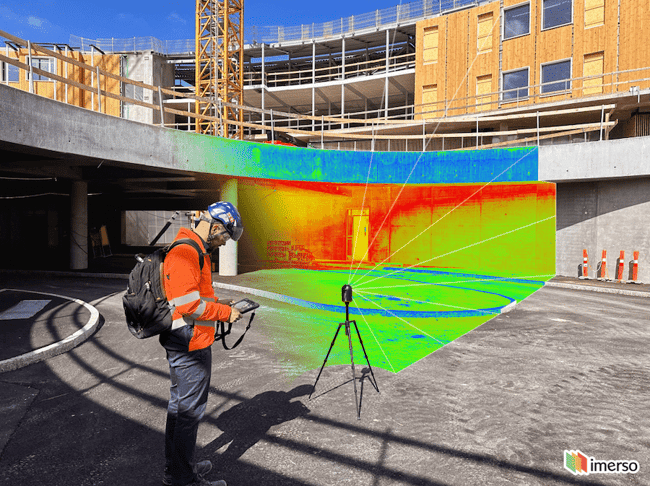 3D laser scanning in construction is rapidly becoming a standard site supervision routine.
3D laser scanning in construction is rapidly becoming a standard site supervision routine.
This technology has been used in construction for well over a decade. Traditional applications involve capturing existing properties during the planning phase of a renovation or refurbishment project. This allows loading the existing onsite conditions into popular design authoring tools, like ArchiCAD or Revit to accelerate modelling and planning work while eliminating risk of wrong measurements and lack of context.
During the construction phase, laser scanners have been used to survey the current As-Built status at the site in preparation for work packages demanding precise tolerances and measurements. This is especially relevant to meet the growing trend of offsite construction and prefabricated elements, which are built to fixed specifications. If the onsite conditions no longer match what was planned, these installations will not fit. Costly headaches are sure to follow.
3D scans bring multiple advantages over flat photos and 360 images. Users can rotate scan data into any viewpoint they want, take any measurements that may only come to mind later, calculate volumes, analyse surface levels, update design models to the real onsite conditions, and resolve engineering challenges, among many others. This wider breadth of information allows the use of 3D scans in construction in ways that regular photos and 360 images simply cannot match.
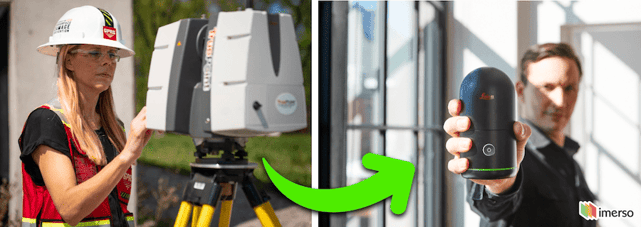
3D laser scanners are becoming a must-have tool for everyday jobsite monitoring.
More recently, new-generation devices have entered the market at a fraction of the price, weight, and learning curve of traditional heavy-duty laser scanners, while delivering much faster and more user-friendly onsite workflows.
Software tools like Imerso make 3D scan data easily accessible to any non-surveyor users, allowing construction projects to use 3D Scanning much more routinely and easily share insights across teams. This enables project leaders to capture the site conditions on a continuous basis with unprecedented accuracy, and automatically checking work quality against the building plans.
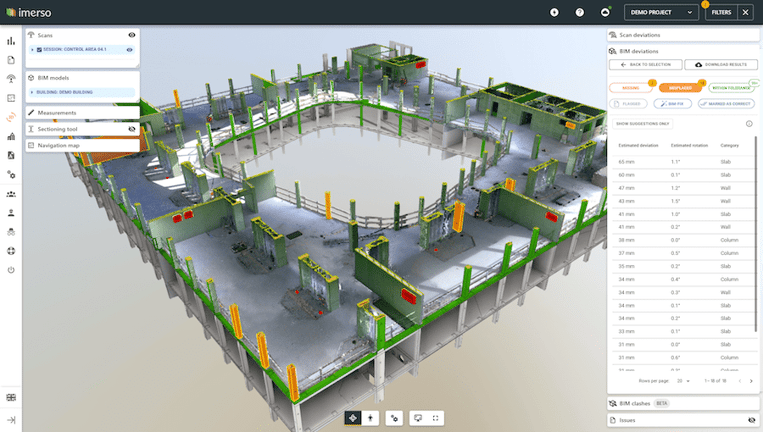
Construction management software like Imerso makes 3D scanning easily available to every construction site while automating work supervision tasks.
This allows promptly returning detailed status reports and early alerts of any detected discrepancies, even those invisible to the naked eye. And as a bonus, Imerso can also display 360 photos just like other image-dedicated platforms. As a result, modern 3D laser scanning solutions allow users to document the site with precise measurements and volumes, and track work quality much more efficiently and with less work than 360 cameras.
.jpg?width=596&height=426&name=Imerso%20-%20Surface%20Analysis%20DIN%2018202%20(1).jpg) 3D Scanners can automatically check for onsite issues such as surface flatness levels and out-of-tolerance installations, invisible in 360 camera images.
3D Scanners can automatically check for onsite issues such as surface flatness levels and out-of-tolerance installations, invisible in 360 camera images.
Comparison of 360 cameras to 3D laser scanners for construction
So, should you rely on 360 cameras, or turn to 3D laser scanners to monitor progress and control work quality at your jobsites? Both approaches have pros and cons, leading to relative advantages and disadvantages depending on your use case.
Ultimately, you should use the right tool for the right job. Since these technologies are designed to achieve different goals, they are really not mutually exclusive. In fact, many companies use 3D laser scanning together with 360 camera platforms, augmenting each other’s limitations.
Lets go through the main pros and cons of each approach.
Strengths and weaknesses of 360 cameras in construction
Here are the biggest strengths and weaknesses of using 360 cameras in construction.
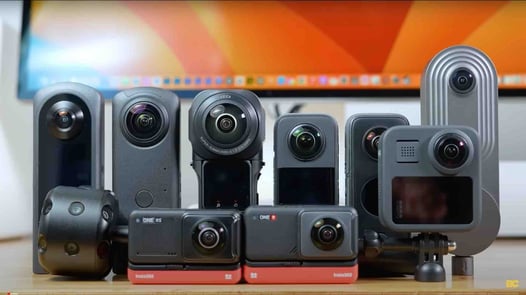 The biggest advantage of 360 cameras is their low price point and wide availability.
The biggest advantage of 360 cameras is their low price point and wide availability.
| STRENGTHS | WEAKNESSES |
| Affordable hardware 360 cameras are readily available consumer- grade devices. |
No real-life measurements and volumes |
| Easy to Use Most 360 camera software provides preset recording modes and simple user interfaces. |
Limited and subjective work inspections 360 images can show you if something is onsite, but not if that something is installed correctly and within specified tolerances. |
| Remote virtual visits like Google Maps Great for team meetings, easy to learn. |
Costly deviations stay hidden Little automation can be applied to analyse 360 images to detect quality control defects due to the lack of measurements and volumes. |
| Good visual support for progress tracking Simply compare two images of the same area taken at different points in time. |
No support for engineering or updating BIM 360 images provide as little support as regular photos for updating BIM models to the onsite changes, or resolving engineering challenges. |
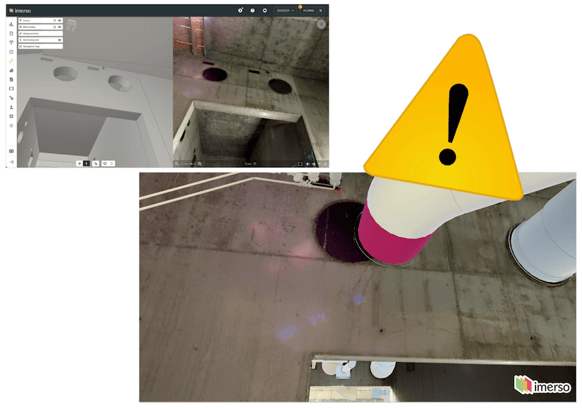 The biggest weakness of 360 cameras is that they only capture flat images for virtual site visits, lacking real-life measurements or volumes. This leaves severe issues hidden until it's too late.
The biggest weakness of 360 cameras is that they only capture flat images for virtual site visits, lacking real-life measurements or volumes. This leaves severe issues hidden until it's too late. Strengths and weaknesses of 3D laser scanners in construction
Here are the biggest strengths and weaknesses of using 3D laser scanners in construction.
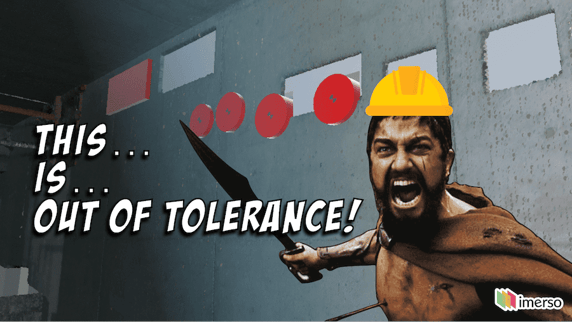 The biggest advantage of 3D laser scanners is that they deliver millions of accurate measurements in seconds. This allows automatic detection of onsite work issues and hidden deviations without user subjectivity.
The biggest advantage of 3D laser scanners is that they deliver millions of accurate measurements in seconds. This allows automatic detection of onsite work issues and hidden deviations without user subjectivity.
| STRENGTHS | WEAKNESSES |
| Real-life measurements and volumes Laser scanners capture physical spaces in real 3D, with millimetre-precision. |
Higher upfront investment 3D laser scanners for construction are more expensive than 360 cameras. |
| Faster data capturing Yes, taking a photo is faster, but you'll need to return to the site often to get measurements and more information. Scanning gets the site itself in one go, including 360 images, and recent devices can capture entire sites in a few hours. |
Require some user learning New-generation tools like Imerso enable non-expert users to start scanning their sites in minutes without any training, but most alternative scanning software has a much steeper learning curve. |
| Faster inspections through automation AI systems like Imerso can automatically analyse the onsite status against the planned BIM specifications in minutes. |
Harder to analyse and share scans Unless you’re an Imerso user 😁 |
| Fewer blind spots and hidden issues Automatic scan inspections with software like Imerso catches a much wider number of work issues, especially those not visible in 360 images. This includes surface flatness levels, tilting or rotated structures, violations of ceiling heights, violations of regulatory requirements... |
Require preparing the site in advance Not the case for Imerso users, but true for traditional 3D scanning workflows, which require setting up target markers and other such complicated procedures. |
| Direct connection to BIM 3D Scans provide crucial information for quickly resolving engineering challenges. Imerso users can even automatically update their BIM models to the As-Built status at the press of a button – eliminating countless hours of manual modelling. |
Scan data is heavier than 360 photos. |
| Scanners also capture 360 Images Most modern 3D laser scanners also capture 360 images, so you can get the best of both worlds. |
3D laser scanners are scary Taking photos is a more intuitive process for most people, but once you take your first 3D scan with Imerso you'll see that the same intuition applies. Don't be scared. |
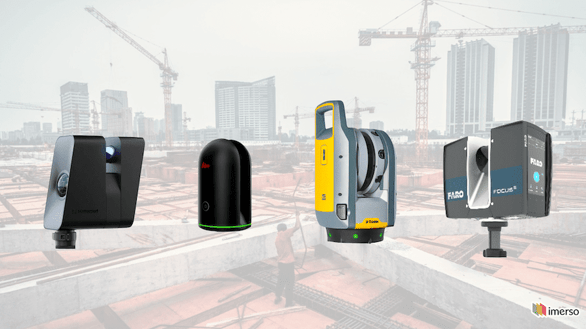 The biggest disadvantage of 3D laser scanners for construction is the higher upfront equipment cost.
The biggest disadvantage of 3D laser scanners for construction is the higher upfront equipment cost.
Conclusion: Are 360 cameras or 3D laser scanners best for construction?
If you’ve read this far, congratulations — you are now better versed in modern construction technologies than 90% of your peers! You are also most likely a construction tech geek just like us. But this is a tricky question: the answer obviously depends on the project's needs.
As mentioned, many of our customers use both Imerso and 360 cameras in their projects to get a full overview of what’s going on. We’ve seen companies initially telling us that their use of 360 cameras is sufficient for their needs, only to later become Imerso customers after facing costly clashes and rework delays (much larger than the cost of a scanner) that could have been prevented entirely had they started scanning earlier.
A leading Norwegian general contractor, Lag Entreprenør, uses both 360 cameras and 3D scanning with Imerso in their projects. According to BIM Manager Håkon Grande:
"360-degree photo technology is a very efficient way to document the jobsite, but the simplicity of this approach has limitations. It doesn't facilitate any in-depth analysis to the extent Imerso does. By enabling easy 3D scanning routines, Imerso brings a level of accuracy and credibility that is invaluable, especially in complex constructions. This strongly enhances our quality control and project management workflows. 360 cameras are less suitable for projects that require stringent adherence to standards."
360 Cameras will likely always be the cheaper and simpler option, ideal for remote virtual tours. This comes at the expense of less information captured and less project risk eliminated than using 3D laser scanners, which provide a much wider range of applications beyond simply viewing the images. For all the added benefits of capturing work status routinely with such the level of detail and use-cases, the extra dedication to scanning is often easily worth the effort.
TL;DR: Don't overthink it — With Imerso you get the best of both worlds.
Check out the 10 Reasons why Imerso is a must-have tool for every construction manager.
About Imerso
Imerso is a software platform that combines BIM, Reality Capture, and AI technologies to automate construction site supervision and quality inspections with one simple workflow. We help construction companies cut project risks and delay costs with real-time monitoring of site status and work quality.
For additional reading, check out the 7 Powerful ways of using Imerso to supercharge your construction projects.
Image credits:
www.imerso.com
www.openspace.ai
www.benclaremont.com

.png?width=350&height=147&name=Imerso_Logo_A4_White_Transp%201%20(1).png)
